How careless design of showers is killing, maiming, and scalding people of all ages
The standard tub/shower combination is lousy at either function and should be put out of its misery.
Based on Le Corbusier’s Manual of the Dwelling, this is a series where we develop a manual for understanding the homes we have today and what they must become – resilient in the face of change, supportive of our health and well-being. Efficient but, more importantly, sufficient – just what we need to be happy, healthy, and comfortable.
OK, we have covered the toilet, the bidet, the killer bathtub and the sink. Today, let’s look at the killer shower. According to the Centers for Disease Control and Prevention, in 2008 (I can’t find any more recent data) there were 234,094 bathroom injuries, with 78,000 of them being slips and falls getting out of the tub or shower.
The shower was originally an afterthought, added to tubs long after running hot and cold water came to the bathroom; they look even deadlier than modern versions.
The vast majority of North Americans have tub/shower combinations, mostly like the five foot “standard” recess tub that has been around since 1911 and has barely changed in a century. I don’t know who thought mixing soap, water, and a curved smooth metal bottom together in one place and standing on it was a good idea, but it has been the deadly standard ever since.
Kohler ads from the 50s generally show grab bars, but only 19% of American tubs have them. So when people step out of the tub, as in the image at top, the back foot with most of the weight is on a wet slippery surface, while the front foot lifts high over the side of the tub and down onto what is often a slippery floor, with a shift of weight from one foot to another. It’s designed to kill or maim.
This is why I believe everyone should have a stall shower, separate from the tub. It takes a little bit more room, and if you don’t have the room, then perhaps you should just have a shower without the tub. In my bathroom, I put the shower beside the tub with the controls in the middle of the wall, reachable from both. You should always have a hand shower, because the parts of your body that often need the most cleaning need a shower head that points up, like in a bidet, not down. You don’t see a lot of those (I proposed it once and the client thought I was nuts) so the hand shower is the next best thing.
In Alexander Kira’s classic 1966 book The Bathroom, he has a nonslip floor, lots of storage for shampoo and soap, “minimum 4 x 16 inches” a hand shower, and notably, a seat or footrest, writing “the most critical problem comes with washing the feet.” He would scoff at the modern fad of rain shower heads, noting that people often do not want to get their hair wet when they shower.
The worst shower I ever used was in a very fancy AirBnB in Edinburgh. The base was some kind of mini-tub, too small to bathe in but still had all the slipperyness. The door didn’t open outwards because it hit the toilet enclosure, so I had to climb over the end of the weird seat. Then I couldn’t reach the hand shower, which sprayed against the door and soaked the floor outside the shower.
A close second was in the Standard Hotel on the high line in New York, where I was staying in a room with my kids when it first opened, and the wall to the bedroom is glass. The floor was the same shiny tile as the wall and as soon as you turned the water on, you were skating, slipperiest floor I was ever on. I was holding on to the edge of the glass for dear life while I showered.
Then there is the matter of the controls. They are almost always directly under the shower head for the convenience of the plumber, rather than out of the stream so you can adjust the temperature before you get in. Alexander Kira noted in 1966:
“Perhaps the single most important consideration in the design of a comfortable and safe shower unit- and the one almost universally ignored- is the proper placement of controls in relation to the water source and the entrance. Almost without exception, the controls are located directly under the water source. Any number of serious accidents have occurred either through scalding or through the violent evasive movements made by the bather’s trying to reach and adjust the controls while avoiding the stream. This problem is so serious and so widespread that its importance cannot be overemphasized.”
And here we are, 58 years later, and everyone is still putting the controls under the shower head.
The controls themselves are generally awful. There is no standard in North America; sometimes you turn the handle this way, sometimes that. I have been boiled or frozen when I didn’t get it right. In Europe, or in the Citizen M in New York where they use European fixtures (it’s modular and made in Poland) they have a clearly marked valve on one side for water pressure and on the other side for temperature. They never bury the valves in the walls, so they can be easily fixed. (when the plumbing in our upstairs shower died, the plumbers had to rip the wall apart to replace it) and it acts as a shelf. This all makes so much sense.
Perhaps the smartest shower design I have seen in North America was in the Homewood Suites in Denver, a not so great hotel I stayed in for a Passivhaus conference last October. But look what they did here. the floor is a molded plastic pan with a bumpy nonslip surface sloping toward a trough drain at the end. the controls are straight ahead when you enter, far out of the water stream. There’s a substantial grab bar on the wall. I wondered what that little triangular thing was in the corner under the soap, and just figured it out while re-reading Kira for this post: a footrest, which Kira says “need be no more than six inches by six inches and could be absorbed diagonally across one corner.” Whoever designed this shower knows their Kira.
All the bathrooms in the Ohboy Hotel in Malmö, where every room comes with a bicycle, were fully accessible. This works well; lots of room, easy to use, and you never have to worry about your bathroom floor because you can clean the whole room with that hand shower.
Really, it’s not 1910 anymore. The new standard should be:
Never combine a tub with a shower.
Always have a hand shower.
Pick a really bumpy non-slip floor surface.
Don’t put the controls under the shower head.
Think of accessibility and don’t put a curb in. It’s a trip hazard anyway.
Think of a seat or a footrest.
Scalding is a major source of injury in the tub and shower; have a water temperature limiting device or mixing valve to ensure that the maximum temperature is 120°F (49°C)
UPDATE: Critic Fred Bernstein notes that I forgot grab bars on this list, they are a must.
Before anyone thinks of designing a bathroom, they should read Alexander Kira. Here’s a link to a free scanned copy.



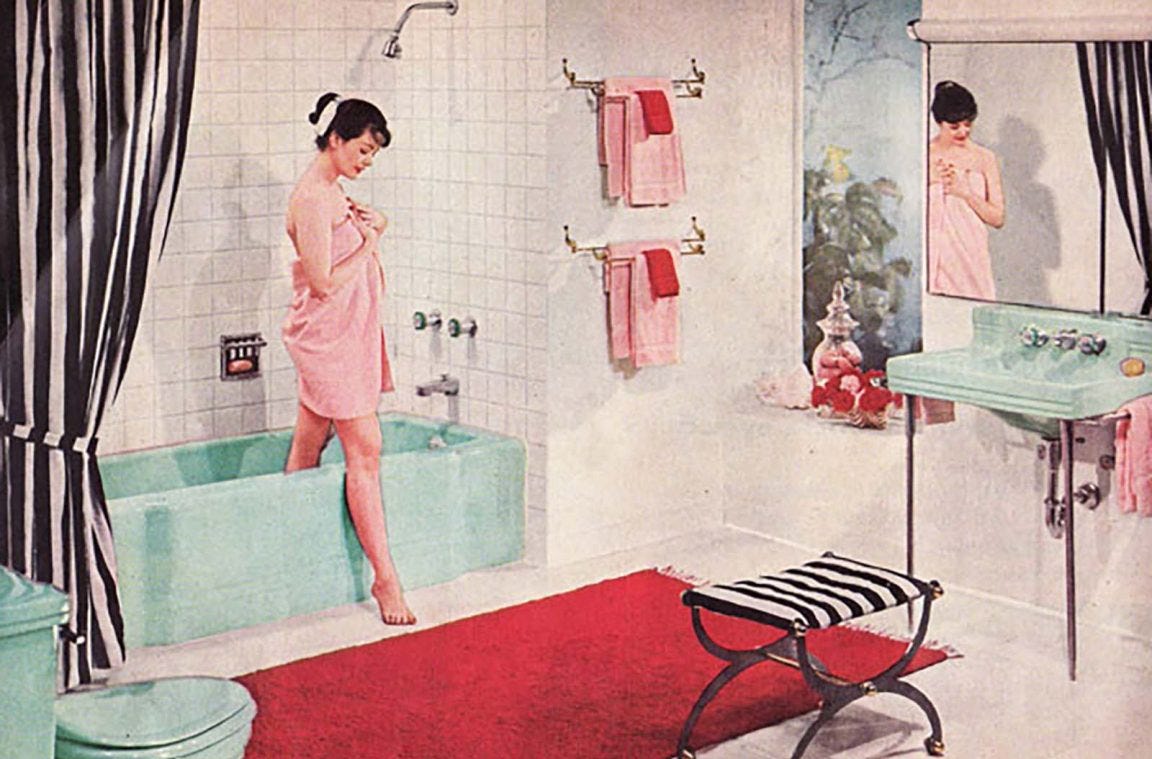
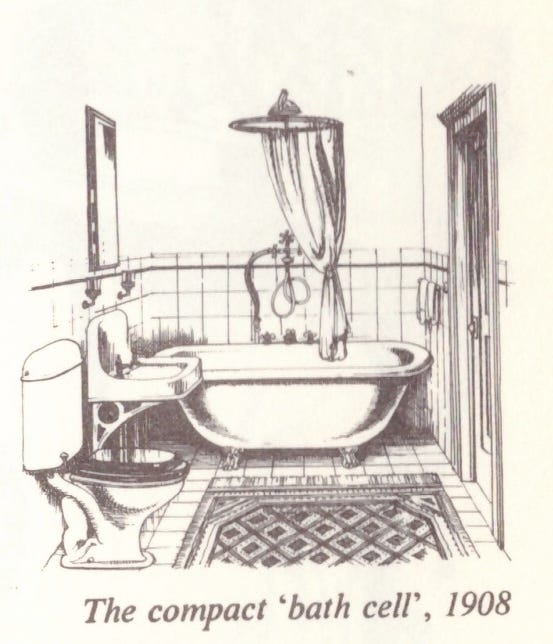

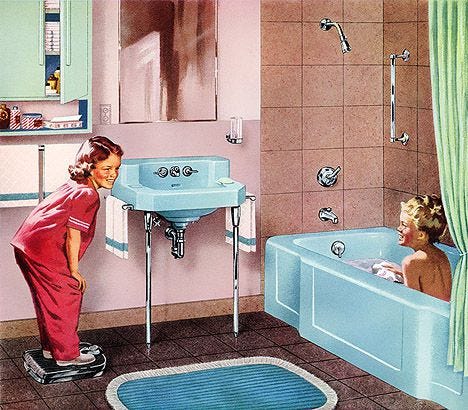
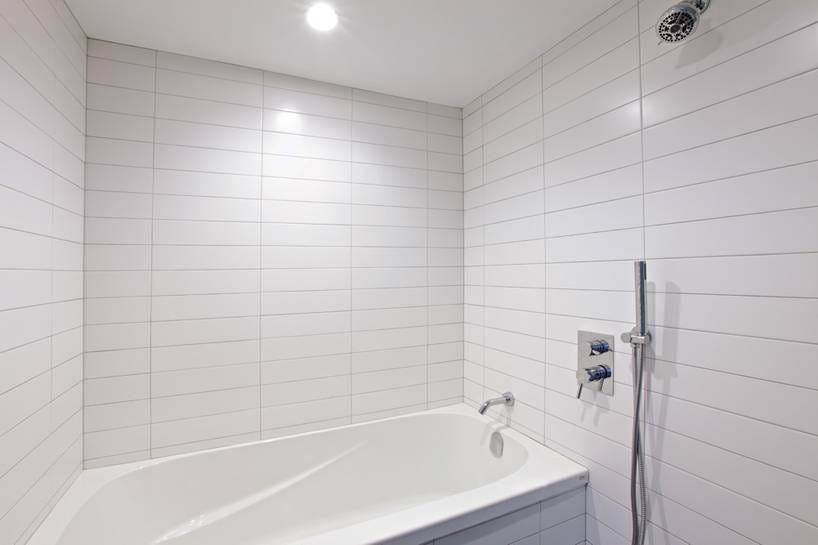
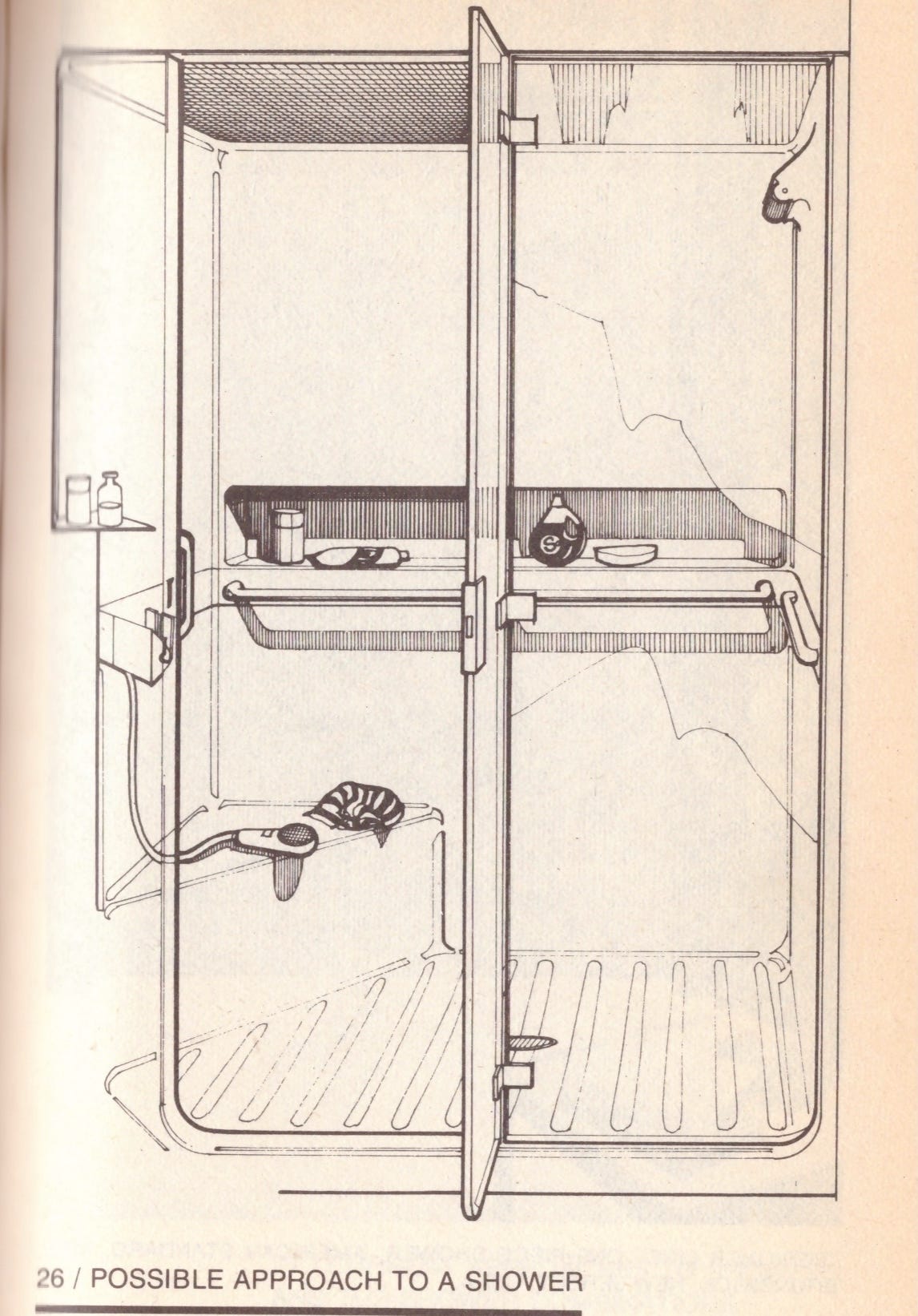
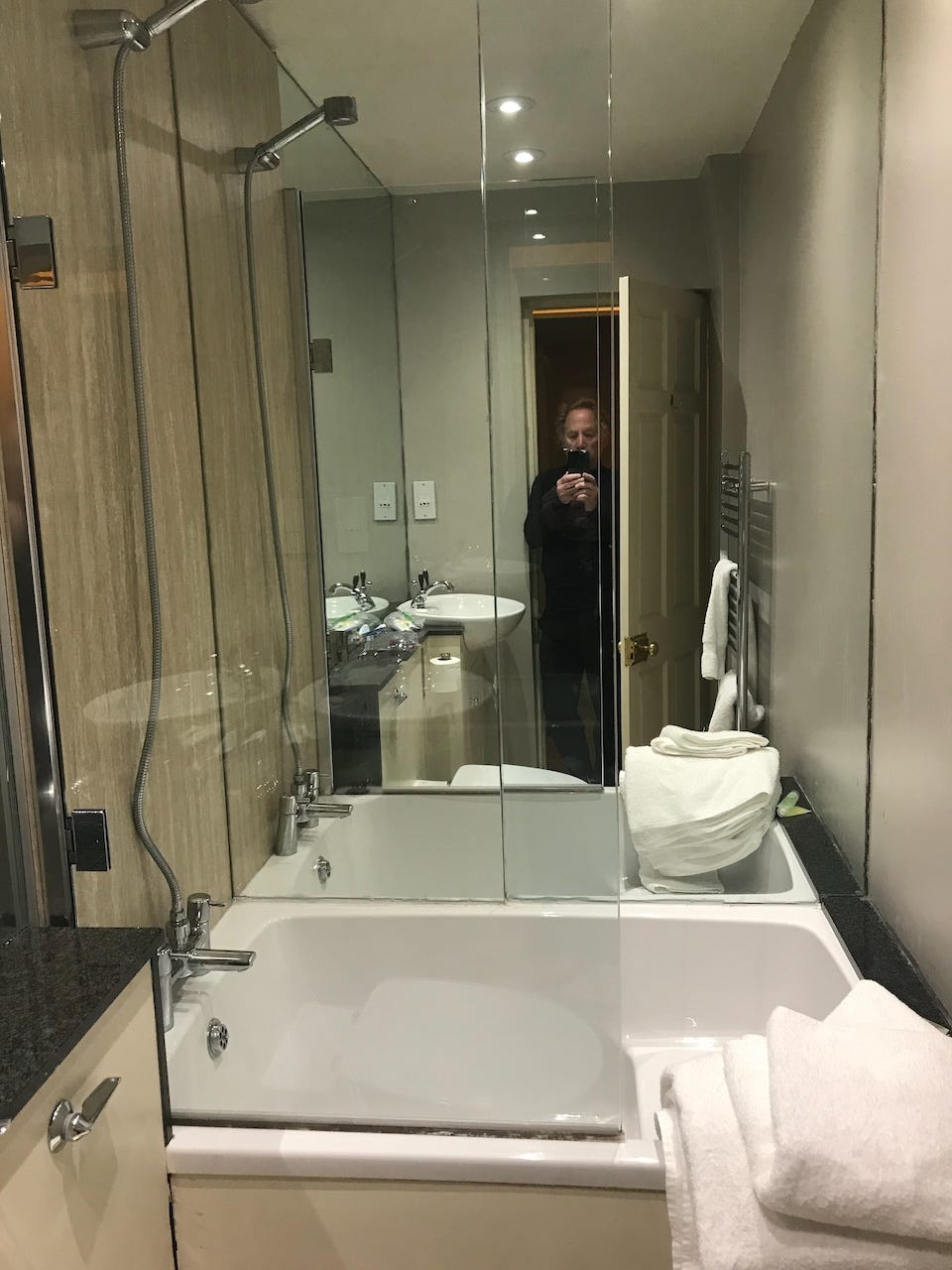


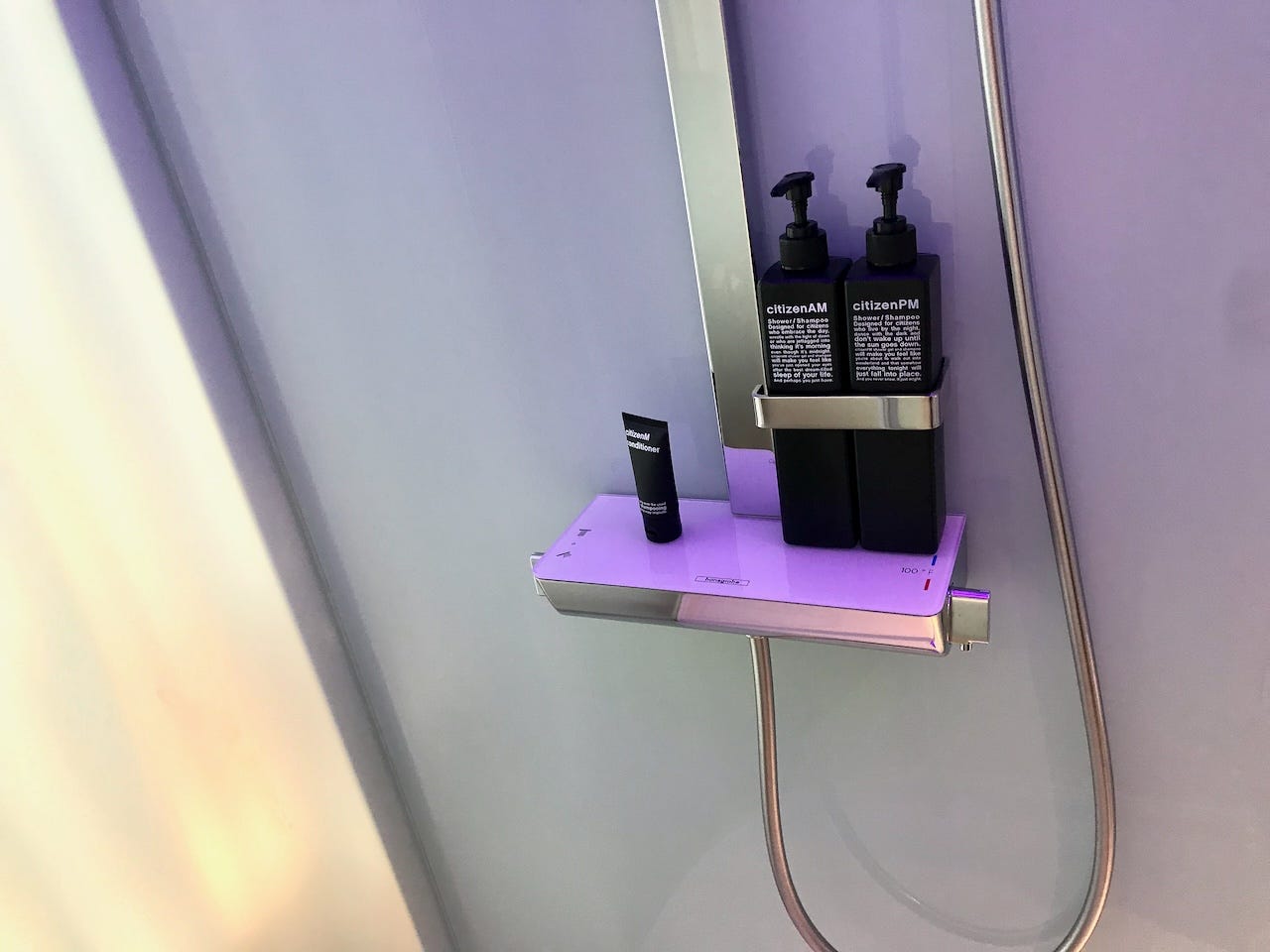
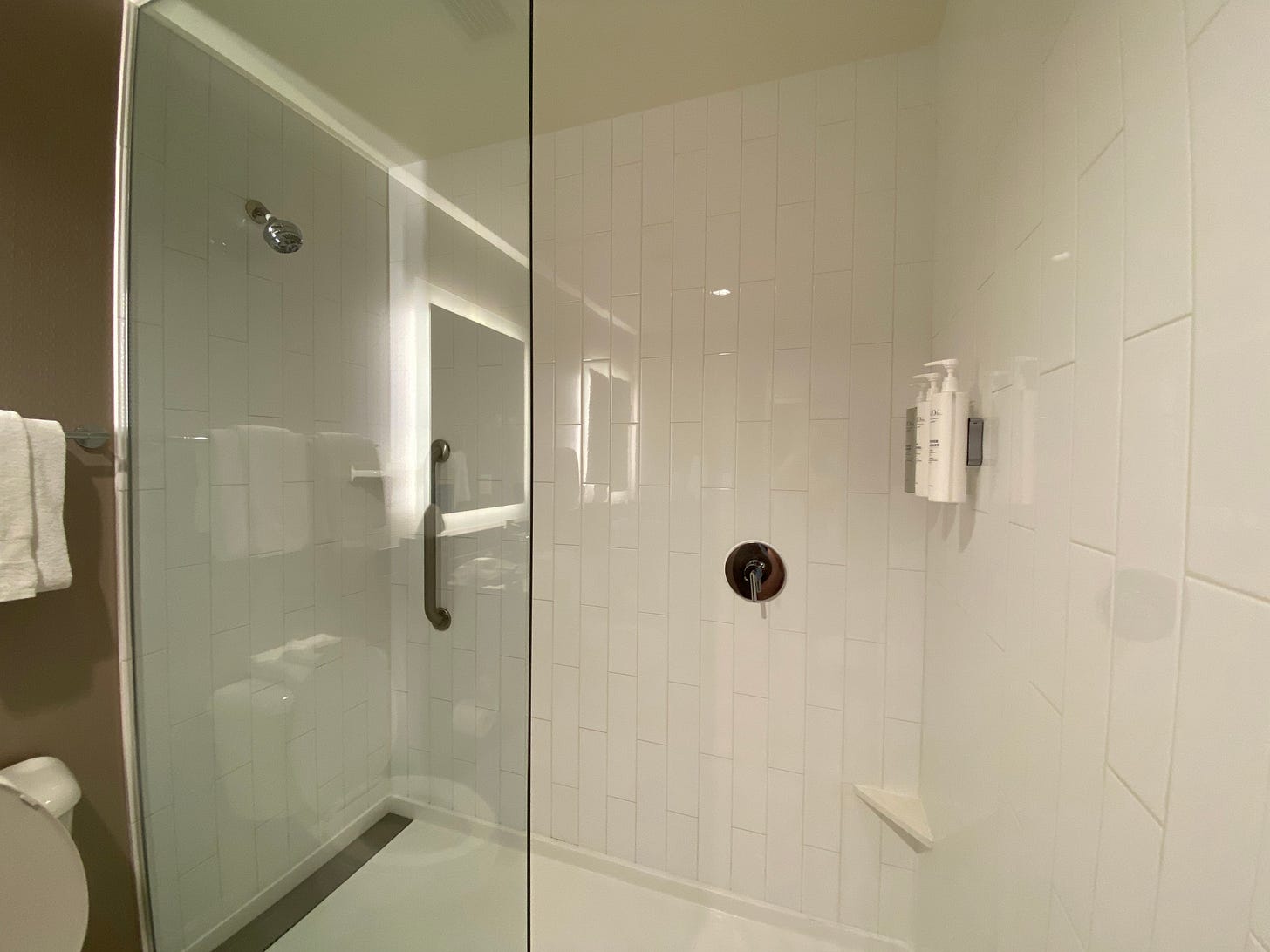
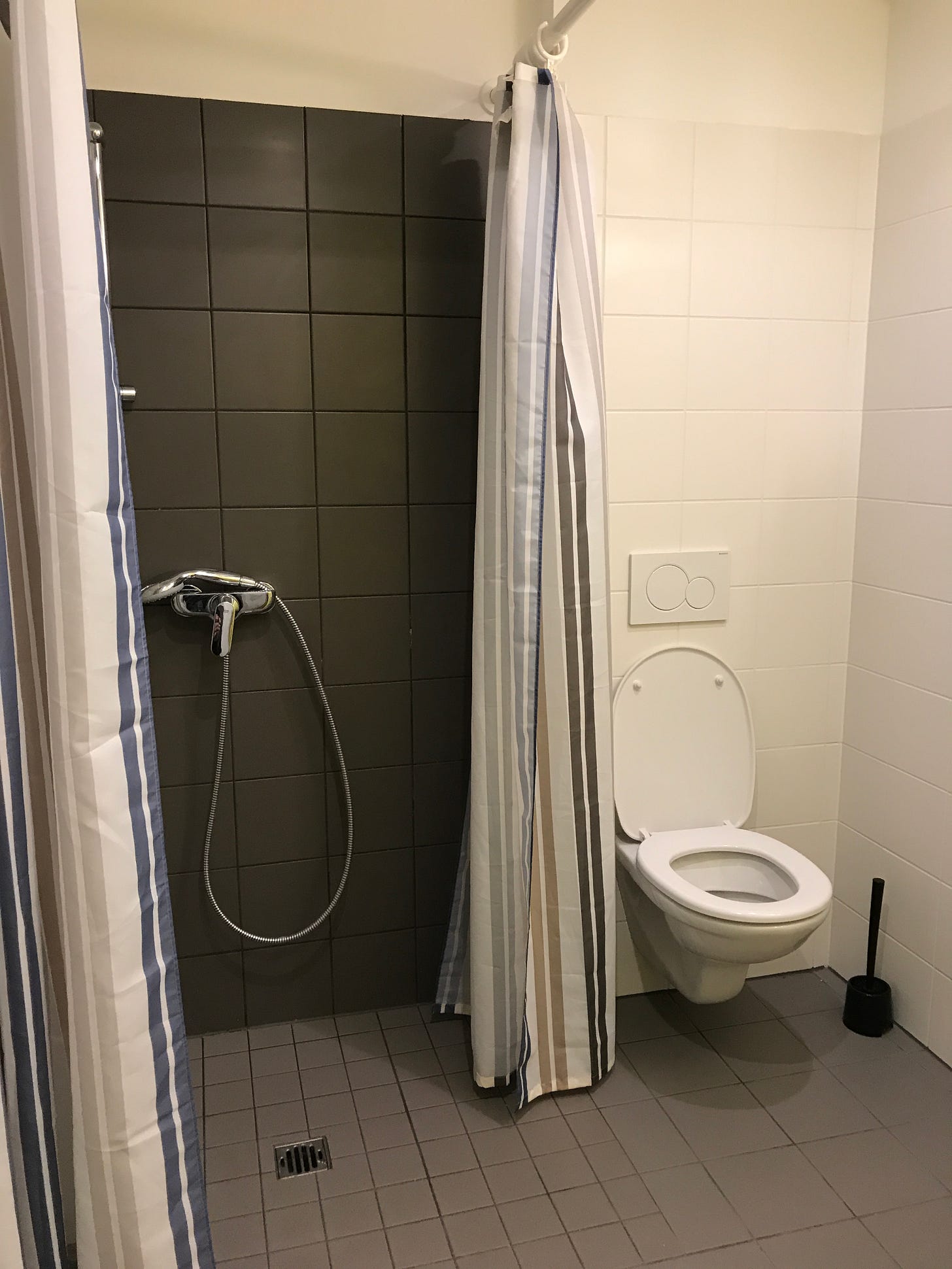

If one doesn't insist on a glass enclosure and is willing to use a lowly shower curtain some of these issues are solved. We have a 3'x4' one piece acrylic shower stall. The floor is pebbly and not very slippery. I can reach in past the shower curtain and set the water temperature to suit before getting in. The acrylic is way easier to clean than the tiled shower I had in my last two houses because there isn't any grout. The shower is open at the top (+/- 7' above the floor) and I located the ERV exhaust pick-up adjacent to the shower and slightly above the top of the shower stall, so it keeps the mirror clear of condensation.
The best shower in our house is the outdoor shower! May - October is the best time of year for showers!
I had a shower like the Homewood Suites one in a Residence Inn this weekend and hated it! It was sized for a tub but was only a shower. There was a wall of glass near the shower head to keep water out of the bathroom, but the other side was fully open, which made for cold ambient air (and water still got everywhere). I agree with you on controls accessible outside of the stream, but felt the ones I just used were too far away to be useful (it also took longer for temperature changes at the valve to register at the shower because of the additional piping that had to empty).
100% agree on hand showers! They’re standard in Europe and should be more widely used in NA!